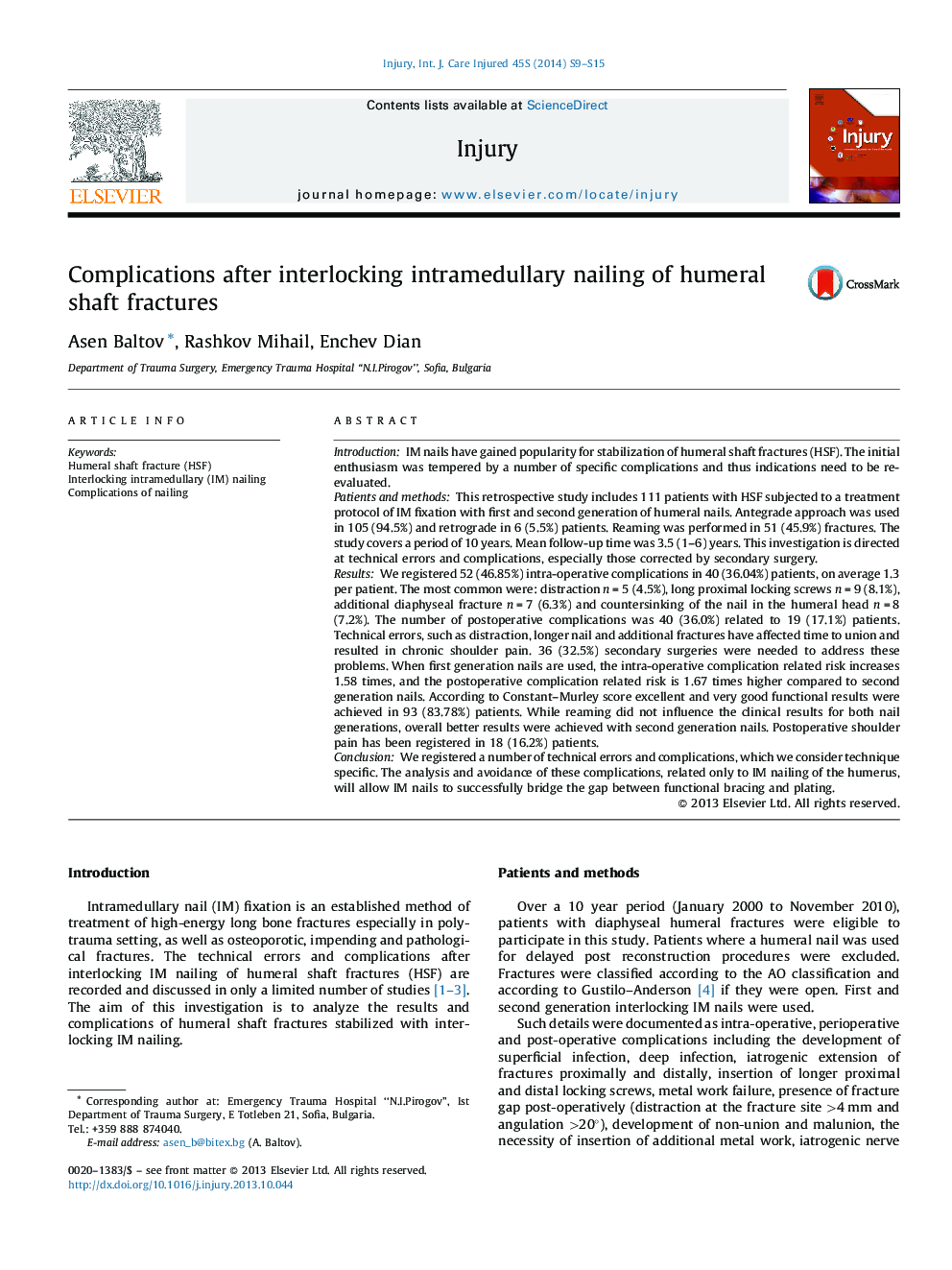| کد مقاله | کد نشریه | سال انتشار | مقاله انگلیسی | نسخه تمام متن |
|---|---|---|---|---|
| 3240100 | 1206031 | 2014 | 7 صفحه PDF | دانلود رایگان |
IntroductionIM nails have gained popularity for stabilization of humeral shaft fractures (HSF). The initial enthusiasm was tempered by a number of specific complications and thus indications need to be re-evaluated.Patients and methodsThis retrospective study includes 111 patients with HSF subjected to a treatment protocol of IM fixation with first and second generation of humeral nails. Antegrade approach was used in 105 (94.5%) and retrograde in 6 (5.5%) patients. Reaming was performed in 51 (45.9%) fractures. The study covers a period of 10 years. Mean follow-up time was 3.5 (1–6) years. This investigation is directed at technical errors and complications, especially those corrected by secondary surgery.ResultsWe registered 52 (46.85%) intra-operative complications in 40 (36.04%) patients, on average 1.3 per patient. The most common were: distraction n = 5 (4.5%), long proximal locking screws n = 9 (8.1%), additional diaphyseal fracture n = 7 (6.3%) and countersinking of the nail in the humeral head n = 8 (7.2%). The number of postoperative complications was 40 (36.0%) related to 19 (17.1%) patients. Technical errors, such as distraction, longer nail and additional fractures have affected time to union and resulted in chronic shoulder pain. 36 (32.5%) secondary surgeries were needed to address these problems. When first generation nails are used, the intra-operative complication related risk increases 1.58 times, and the postoperative complication related risk is 1.67 times higher compared to second generation nails. According to Constant–Murley score excellent and very good functional results were achieved in 93 (83.78%) patients. While reaming did not influence the clinical results for both nail generations, overall better results were achieved with second generation nails. Postoperative shoulder pain has been registered in 18 (16.2%) patients.ConclusionWe registered a number of technical errors and complications, which we consider technique specific. The analysis and avoidance of these complications, related only to IM nailing of the humerus, will allow IM nails to successfully bridge the gap between functional bracing and plating.
Journal: Injury - Volume 45, Supplement 1, January 2014, Pages S9–S15
